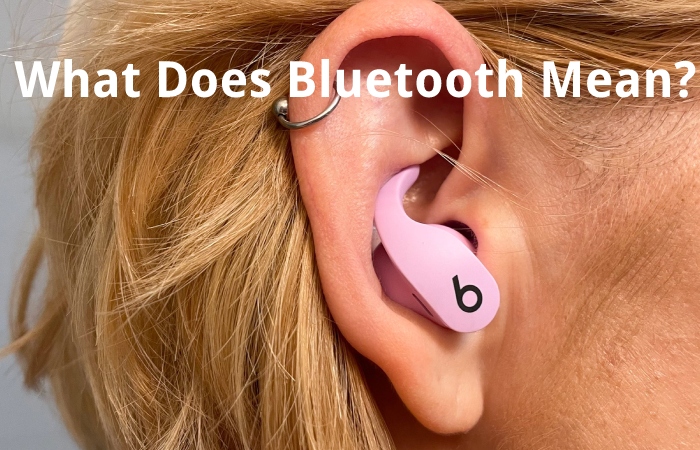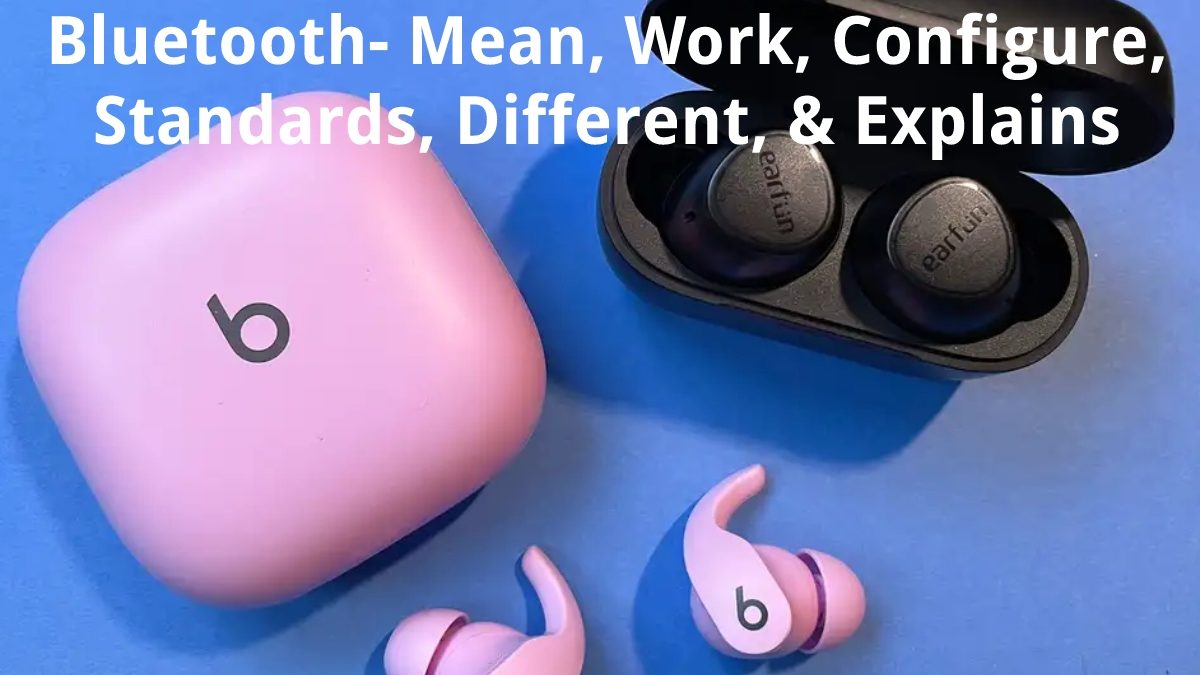Bluetooth is a wireless technology standard for exchanging data over short distances using short-wavelength, UHF radio waves in the ISM band from 2.4 to 2.485 GHz for fixed and mobile devices in network construction. personal area (PAN). Invented by the Swedish telecommunications provider or company Ericsson, it was initially conceived as a wireless alternative to RS data cables, which can connect multiple devices, overcoming synchronization problems.
Table of Contents
What is Bluetooth?
Bluetooth is a communications protocol used for the wireless transmission of data (photos, music, contacts.) and voice between different devices at a short distance, within a range that is generally ten meters. For example, thanks to this technology, we can link our smartphone with a print to print our favourite photos without needing cables.
Bluetooth has been associated with mobile phones since these were among the first devices to incorporate the protocol. However, this wireless technology is present today in smartphones, tablets, laptops, mice, keyboards, printers, headphones, televisions, digital cameras, MP3 players and game consoles.
What Does Bluetooth Mean?

Bluetooth is an open wireless technology standard for transmitting fixed and mobile electronic data over short distances. It present in 1994 as a wireless substitute for RS-232 cables.
Bluetooth communicates with various electronic devices and creates personal networks within the unlicensed 2.4 GHz band. The operating range is based on device class. Different digital devices use Bluetooth, including MP3 players, mobile and peripheral devices, and personal computers.
How does Bluetooth Work?
Bluetooth technology wirelessly transmits data and voice through radio waves that operate in the ISM (non-commercial) band of 2.4 GHz. To do this, it uses Wireless Personal Area Networks (WPAN, for its acronym in English). When performing the transfer by radio frequency, the devices do not have to be in alignment.
On the other hand, however, the equipment must be within a range, which is usually short, although it may vary depending on the device. Thus, they are classified as follows:
Lesson 1 plans: They have a maximum permitted power of 100 maw and, therefore, a range of 100 meters.
Lesson 2 plans: They are characterized by having a range of between 5 and 10 meters, given that their maximum permitted power is 2.5 m. These are the most common.
Class 3 devices. They have a maximum power of 1 m and a range of only one meter.
How to Configure Bluetooth?
As we go through the explanation, we realize this protocol’s advantages for transmitting voice and data wirelessly and free of charge. Still, we have yet to comment on how we can start enjoying it. So, we will go to the point: its configuration is straightforward.
First, Bluetooth must activate, making the devices to connect “visible”. Usually, this is done from the settings or configuration of the device. Next, the teams are paired (the first time it is done, it is necessary to enter a name or a password in them –the same for both–). It is also essential that the devices have compatible versions to avoid connection complications.
What Uses can I Give to Bluetooth?
The possibilities offered by technology are numerous and exciting, mainly thanks to its easy transmission of, for example, photos or songs without the need for cables. We are going to know below, what are some of its most frequent applications:
Transmission of files, contacts, etc., between different users with Bluetooth or between other devices of the same user.
Wireless connection between technological products and accessories. This is the case with video consoles incorporating Bluetooth, which can use wireless controls connected to them by the protocol or audio systems and their wireless connection with speakers.
Bluetooth Standards
This technology was born in 1994 when the Ericsson company began studying simple and essential communication between mobile and their accessories. Later, other large factories, such as Nokia, Sony, Intel, Toshiba and IBM, joined this investigation.
Bluetooth 1.0 and 1.0b. They had many interoperability difficulties, and the inclusion of the device address require, so anonymity was not possible.
1.1 Bluetooth: It introduced the correction of many errors in the immediately previous standard. In addition, it added support for non-encrypted channels, that is, without the need to enter the address.
1.2 Bluetooth: It provided the possibility of a faster connection and transmission speed and improved resistance to interference in radio waves.
2.0 Bluetooth: Introduced higher data rate (with EDR technology) to speed up transfers. This EDR feature introduces, however, as an optional property.
2.1 Bluetooth: It improved the pairing between two devices increase the security of the technology.
3.0 Bluetooth: Increased the data transfer speed up to 24 Mbit/s.
4.0 Bluetooth: Created in 2010, it is the most recent and combines classic, high-speed (WIFI-based) and Bluetooth low-energy protocols.
The emergence of the Bluetooth Standard
Bluetooth ( “Blue projection” in English, although the name originates from the Danish and Norwegian king Harald Blatant, translated as Harold Bluetooth ) is the commercial and popular name for the wireless communication standard IEEE 802.15.1. The first company to examine this technology was Ericsson, who led a group that, over time, added IBM, Nokia, Microsoft, Motorola, and other companies that supported the standard. In addition, process, mobile phones and digital cameras are some devices that can communicate using tooth technology (as long as their models allow it).
Different Classes of Bluetooth
There are three classes of Bluetooth: Class 1 (with a range of approximately 100 meters), Class 2 (10 meters), and Class 3 (1 meter). Specialists believe that, in the coming years, all technological equipment will be able to communicate with each other cheer to the standard.
It can be said that the hardware that makes up a system has two parts: the radio device that modulates and transmits the signal and the digital controller (with a CPU, a digital signal processor known as a Link Controller, and an interface processor).
Queue Bluetooth
In addition to the above, we cannot ignore the existence of other terms that also use the time we are now analyzing. Among those is, for example, the Bluetooth stack concept, which we can specify as an application whose fundamental mission is to manage every one of the services offered by Bluetooth above the port.
Among the series of this type, we would highpoint the Wide comm, the first to appear on the market, or Blue Soleil. All this without forgetting either the Wit, the Blues’ or the Affix. These last two stacks have created basically to work with them in the Linux environment.
Techopedia explains Bluetooth

In contrast to other wireless technologies, Bluetooth equips its network and devices with high-level services like file pushing, voice transmission and serial line emulation.
Its features include:
- Specifications based on frequency-hopping spread spectrum technology.
- The network communicates with a master Bluetooth device and forms with up to seven devices.
- FreeBSD stack executes with a Net graph framework via short wavelength radio transmission signals.
- Device technology includes confidentiality, key derivation and authentication via Secure and Fast Encryption Routine (SAFER)+ block cypher algorithms.
- It uses for the following:
- Wireless control and communication between mobile and hands-free headsets.
- Wireless networking between multiple computers in areas with limited service.
- Wireless communication with PCs and peripheral input/output (I/O) devices.
- With Object Exchange (OBEX), to transfer files, contact details and calendar appointments between multiple devices.
- To replace conventional wired communication, like GPS receivers, medical equipment, traffic control devices and bar code scanners.
- For low-bandwidth applications, when a higher USB bandwidth is desired.
- Bridge multiple industrial Ethernet networks.
- Wireless controllers in many interactive games and play stations.
- Access dialup Internet connection via a PDA or PC.
- Manage short-range data transmission between medical and cellular/other telehealth devices.
- Mobile phone communication with digital enhanced cordless telecommunication (DECT).
- Identify and track object positions with the real-time location system.
- Track livestock and prisoner movement.
- Personal mobile Security Applications.
It comes from the Scandinavian word Blatant/Blatant, which originated from Harald “Bluetooth” Grímsson I, from Denmark and parts of Norway. He was a king, reined in the tenth century and united disagreeing Danish tribes into a single kingdom. It established the name to merge communication protocols into one universal standard.
Conclusion
It is a communications protocol used for the wireless transmission of data (photos, music, contacts.) and voice. It is between different devices at a short distance, within a range that is generally ten meters. For example, thanks to this technology. It can link our smartphone with a printer to print our favourite photos without the need for cables.

